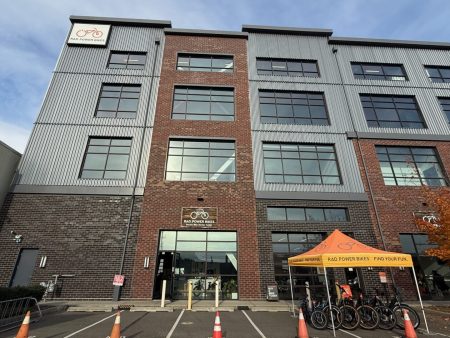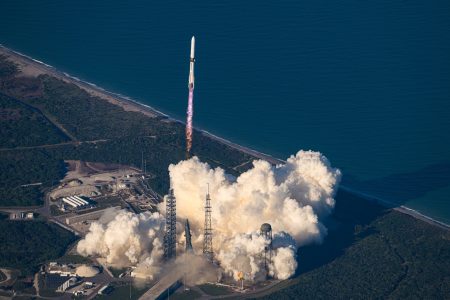Reinventing Windows: A Legacy at Stake in the Age of AI
Microsoft, a tech giant celebrating its 50th anniversary, faces a crucial juncture in its history. The future of its flagship product, Windows, hinges on the company’s ability to reinvent itself yet again. Having previously driven the adoption of personal computers and the internet, Microsoft is now betting on AI to revitalize Windows and bring its potential to a global audience. This ambitious endeavor is not without its challenges, as the software landscape has shifted towards mobile, cloud, and web platforms. Despite maintaining a dominant share of the desktop PC market, Windows must overcome the inertia of its desktop-centric legacy and compete with established giants like Android, iOS, Chrome, AWS, and Meta.
Microsoft’s strategy revolves around integrating AI directly into Windows, utilizing neural processing units (NPUs) alongside CPUs and GPUs to power advanced AI programs on PCs. This initiative, embodied in Copilot+ PCs, aims to personalize the user experience and transform Windows into a more intuitive and intelligent operating system. However, the initial foray into AI-powered Windows has been met with hurdles. Security and privacy concerns delayed the launch of the "Recall" feature, a key component of Copilot+ PCs, highlighting the complexities of integrating AI into a platform used by over a billion people. This underscores the critical balance Microsoft must strike between innovation and user trust as it navigates this new frontier.
From Graphical Interface to AI Integration: The Evolution of Windows
The journey of Windows has been marked by both triumphs and tribulations. From its humble beginnings as a graphical operating environment for MS-DOS in 1985, Windows gradually gained momentum, achieving mainstream success with Windows 3.0 in 1990. The pivotal launch of Windows 95, a cultural phenomenon marked by long lines and a memorable ad campaign featuring the Rolling Stones, catapulted Windows into the global consciousness. Subsequent iterations, including Windows XP, Vista, 7, 8, 10, and 11, reflected Microsoft’s ongoing efforts to adapt to evolving technological landscapes and user needs. Each release brought its own set of challenges and breakthroughs, shaping the operating system into the ubiquitous platform it is today.
Despite its enduring presence, Windows now faces a new set of competitive pressures. The rise of mobile computing and the cloud has diminished Windows’ relative importance within Microsoft’s overall business. The company’s cloud platform, Azure, and its Office suite, now Microsoft 365, have become major revenue drivers, overshadowing Windows’ contribution. Even the gaming division, Xbox, temporarily surpassed Windows in revenue following Microsoft’s acquisition of Activision Blizzard. This shift in the tech landscape necessitates a radical transformation for Windows to reclaim its position as a driver of innovation and growth within Microsoft.
The Power of the Ecosystem: Leveraging Partnerships and Developers
A key aspect of Microsoft’s strategy is harnessing the power of its vast ecosystem. This includes collaborating with silicon manufacturers and PC makers to integrate NPUs into devices, empowering developers to create AI-powered applications, and leveraging the diverse range of devices and experiences that Windows supports. The goal is to move from a one-size-fits-all approach to a highly personalized experience, tailoring Windows to individual user needs and preferences. This requires a fundamental shift in the way Windows code is compiled and deployed, moving from a single version for millions to personalized code for each individual user – a monumental undertaking that underscores the scale and complexity of Microsoft’s ambition.
Microsoft recognizes that the success of AI-powered Windows depends on the contributions of its partners and the broader developer community. Just as third-party applications fueled the growth of Windows in its early years, the company is now looking to inspire a new wave of AI-driven apps that leverage the capabilities of NPUs and Microsoft Copilot. This collaborative approach is crucial for unlocking the full potential of AI in Windows and realizing Microsoft’s vision of a more intelligent and personalized computing experience. The hope is that developers will create innovative applications that go beyond the initial use cases envisioned by Microsoft, sparking unforeseen creativity and driving the evolution of the platform.
Challenges and Opportunities: Navigating the Uncertain Future of AI in Windows
The initial rollout of AI features in Windows has been met with mixed reactions. While some features, such as AI image generation and real-time conversation translation, hold promise, they have yet to demonstrate the transformative power needed to compel widespread adoption. Critics point to the lack of a "killer app" – a compelling application that showcases the true potential of local AI and resonates with a broad audience. The challenge for Microsoft is to move beyond incremental improvements and deliver truly groundbreaking experiences that justify the investment in new hardware and software.
Despite the initial setbacks, Microsoft remains committed to its AI-driven vision for Windows. The company emphasizes its commitment to user privacy and security, highlighting the adjustments made to the Recall feature in response to feedback. They acknowledge that the journey is just beginning, with much iteration and refinement ahead. The long-term success of this endeavor will depend on Microsoft’s ability to address the current limitations of local AI, identify compelling use cases, and foster a vibrant ecosystem of developers and partners who can bring the full potential of AI in Windows to life. The future of Windows hangs in the balance, and only time will tell if Microsoft can successfully navigate this critical turning point and usher in a new era of intelligent computing.















